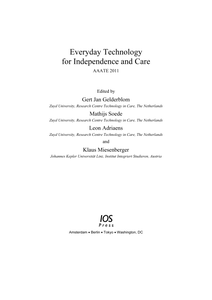Introduction: Given the complexity of teaching clinical reasoning to (future) healthcare professionals, the utilization of serious games has become popular for supporting clinical reasoning education. This scoping review outlines games designed to support teaching clinical reasoning in health professions education, with a specific emphasis on their alignment with the 8-step clinical reasoning cycle and the reflective practice framework, fundamental for effective learning. Methods: A scoping review using systematic searches across seven databases (PubMed, CINAHL, ERIC, PsycINFO, Scopus, Web of Science, and Embase) was conducted. Game characteristics, technical requirements, and incorporation of clinical reasoning cycle steps were analyzed. Additional game information was obtained from the authors. Results: Nineteen unique games emerged, primarily simulation and escape room genres. Most games incorporated the following clinical reasoning steps: patient consideration (step 1), cue collection (step 2), intervention (step 6), and outcome evaluation (step 7). Processing information (step 3) and understanding the patient’s problem (step 4) were less prevalent, while goal setting (step 5) and reflection (step 8) were least integrated. Conclusion: All serious games reviewed show potential for improving clinical reasoning skills, but thoughtful alignment with learning objectives and contextual factors is vital. While this study aids health professions educators in understanding how games may support teaching of clinical reasoning, further research is needed to optimize their effective use in education. Notably, most games lack explicit incorporation of all clinical reasoning cycle steps, especially reflection, limiting its role in reflective practice. Hence, we recommend prioritizing a systematic clinical reasoning model with explicit reflective steps when using serious games for teaching clinical reasoning.
DOCUMENT

Background Interprofessional education is promoted as a means of enhancing future collaborative practice in healthcare. We developed a learning activity in which undergraduate medical, nursing and allied healthcare students practice interprofessional collaboration during a student-led interprofessional team meeting. Design and delivery During their clinical rotation at a family physician’s practice, each medical student visits a frail elderly patient and prepares a care plan for the patient. At a student-led interprofessional team meeting, medical, nursing and allied healthcare students jointly review these care plans. Subsequently, participating students reflect on their interprofessional collaboration during the team meeting, both collectively and individually. Every 4 weeks, six interprofessional team meetings take place. Each team comprises 9–10 students from various healthcare professions, and meets once. To date an average of 360 medical and 360 nursing and allied healthcare students have participated in this course annually. Evaluation Students mostly reported positive experiences, including the opportunity to learn with, from and about other healthcare professions in the course of jointly reviewing care plans, and feeling collectively responsible for the care of the patients involved. Additionally, students reported a better understanding of the contextual factors at hand. The variety of patient cases, diversity of participating health professions, and the course material need improvement. Conclusion Students from participating institutions confirmed that attending a student-led interprofessional team meeting had enabled them to learn with, from and about other health professions in an active role. The use of real-life cases and the educational design contributed to the positive outcome of this interprofessional learning activity.
DOCUMENT

Transitions in health care and the increasing pace at which technological innovations emerge, have led to new professional approach at the crossroads of health care and technology. In order to adequately deal with these transition processes and challenges before future professionals access the labour market, Fontys University of Applied Sciences is in a transition to combining education with interdisciplinary practice-based research. Fontys UAS is launching a new centre of expertise in Health Care and Technology, which is a new approach compared to existing educational structures. The new centre is presented as an example of how new initiatives in the field of education and research at the intersection of care and technology can be shaped.
DOCUMENT
